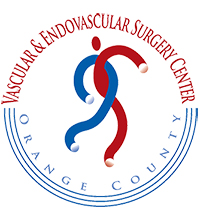Who gets varicose veins?
Varicose veins are enlarged veins with a rope-like appearance. They’re usually purple or blue in color, occur right beneath your skin, and typically affect your legs and feet.
Up to 23 percentTrusted Source of all adults are affected by this venous disease in the U.S. About 33 million of these people are older, with ages ranging between 40 and 80.
Varicose veins are caused by malfunctioning valves in your veins that are unable to bring blood back to your heart effectively as they work against gravity.
Symptoms of varicose veins
For some, varicose veins are only a cosmetic concern. There is no evidenceTrusted Source of a direct link between the appearance of varicose veins and the discomfort they cause. In fact, the large, twisting veins may cause no discomfort whatsoever, while damaged veins that are less visible can become extremely painful.
In general, various symptoms contribute to the overall feeling of pain and discomfort:
- feeling of heavy, achy legs
- muscle cramps
- feeling of throbbing and burning in your legs
- swelling in your calves and around your ankles
- discomfort around a particular area of veins
All these symptoms usually become more bothersome during warm days. Blood vessels have a tendency to dilate with higher temperatures, which makes it even harder for the valves to function properly. The symptoms also worsen as the day progresses and more blood pools around your ankles. Prolonged periods of sitting or standing are also considered aggravating factors and can result in pain.
Elevate your legs
For immediate relief from the pain and discomfort associated with varicose veins, elevate your legs above your heart. You can place your feet up on a table, stretch them up a wall, or lie down in bed and rest your legs on three or four pillows. This will help make it easier for blood flow in your lower body to circulate toward the heart, and the venous valves will function more effectively.
Stay with your legs elevated for at least 15 minutes at a time — that should help reduce the swelling and ease the pain.
Exercise and stretch your legs
Short exercise to stretch your calf muscles a few times a day could also be helpful. Flex your feet frequently, especially during long trips when your leg room is limited.
If you have to sit or stand in your job, change position at least every 30 minutes and bend knees regularly.
Proper hydration and physical movement supports healthy blood circulation, so drink enough water and move around as frequently as possible.
Use cold water
If your legs are in pain at the end of the day, shower them with cold water. Cool temperatures cause blood vessels to shrink. This should alleviate swelling and the associated feeling of heaviness, as well as overall discomfort and leg cramps.
Avoid taking hot baths and spending time in hot tubs. Heat has a negative effect on your veins, and the throbbing pain can become even worse if you spend too much time in hot water.
Preventing pain
As with many other chronic conditions, prevention is paramount. Wearing special compression hosiery can prevent symptoms such as swelling and heavy legs, allowing you to avoid painful cramps toward the end of the day and at night. Putting on compression stockings in the morning before you start walking is key to enjoying the benefits. Once blood starts pooling around your ankles, even compression hosiery won’t be as effective for helping heavy, achy legs.
High heels and tight clothing won’t make your varicose veins feel any better either. They put too much pressure on different areas of your body and constrict blood flow. Try to wear comfortable shoes and clothes, especially if you expect to be on your feet the entire day.
When to see a doctor
If your varicose veins are causing pain and discomfort on a regular basis, talk to your doctor. Varicose veins tend to get worse over time. So treating the underlying condition could result in a more effective solution to your pain than a temporary fix of the symptoms.




